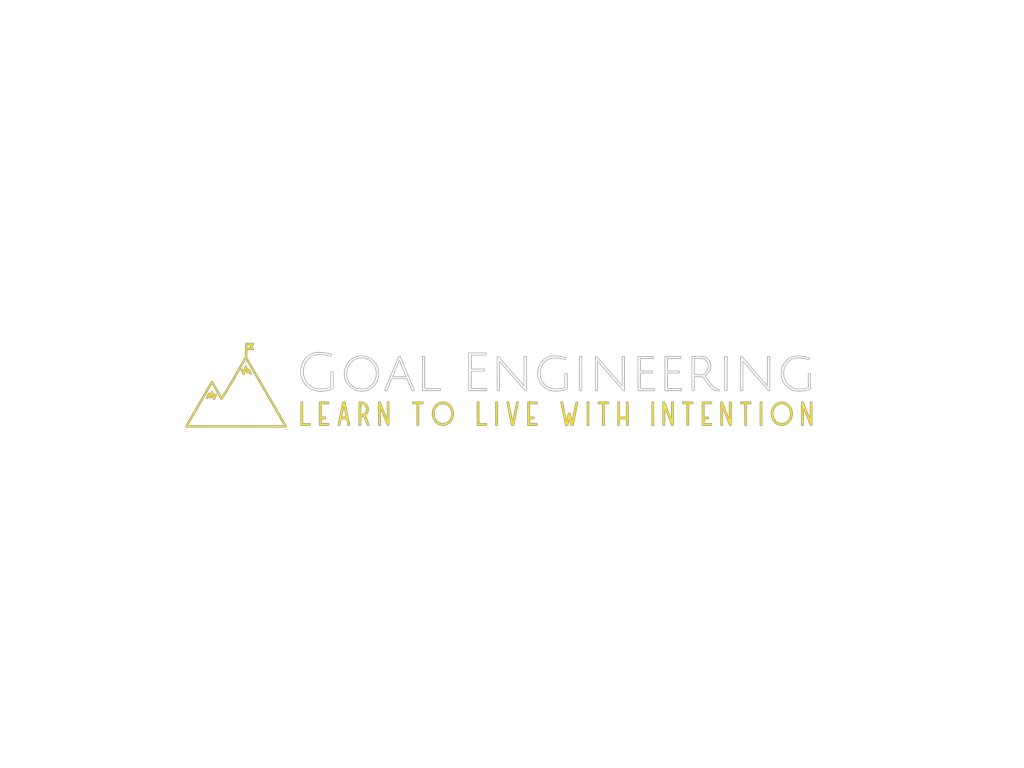Sometimes life gets tough and you struggle to become who you want to be. Looking back at times when this happened to me, I can now see that there was more that I could do about the situation than I thought at the time. That’s why today I want to review some reasons why you aren’t reaching your goals and what to do about them so you don’t have to stay stuck and can still grow even in times of difficulty.
There are many reasons you might not be reaching your goals. You may overwhelm yourself with too many or too difficult goals, not have concrete plans to progress, or lack motivation. To start achieving your goals again you must uncover the main roadblock to your goals and learn how to overcome it.
The rest of this article will explain nine of the most common reasons you might fail to reach your dreams and what you need to do to conquer each. Let’s get into it!
1. You Set too Many Goals At Once
This is the first because it’s the most common problem I see.
I’ve talked with dozens of people who get so excited at the beginning of the year about how much they’re going to change. The only problem is that they try to change too much at once, which always backfires.
The thing most people miss about personal growth is that it has to be a little at a time or you won’t stick with it and you won’t actually improve. You have to break outside of your comfort zone a little bit, then rest, then go a little bit further and rest again.
It sounds tedious, but behind all of the most successful people in the world is the power of consistency. Which is impossible to get unless you set few enough goals that you can stick to them.
I’ve been at this for over 17 years and the number that I usually settle on is no more than four goals at a time. That way you can prioritize only what’s most important. And you can even find goals that will make it so that will make other, lesser goals, irrelevant.
For more on why you should only set four goals at a time, check out this post.
2. You Don’t Prioritize the Highest-Impact Goals
In The One Thing, Gary Keller teaches that the best way to prioritize your goals is by asking this question:
“What is the one thing I can do such that by doing it everything else will be easier or unnecessary.”
When you’re cutting the number of goals you set you’ll be tempted to worry about all of the things you won’t be able to change by focusing on so little. But the truth is that setting too many goals keeps you from achieving them because you spread yourself too thin. This is what I like to call the peach principle.
A few years ago I had a peach tree that often produced bitter fruit. One day while checking on the tree I noticed there were a lot of peaches on it. I decided to remove the peach buds so that there were only a few left.
That year we had bigger, juicier, sweeter peaches than ever before. We had greater quality because we reduced the quantity of the fruit.
The same is true for your goals. Limiting yourself to just a few well-thought-out goals will help you do more because you can put more energy into each goal.
To start setting fewer goals, use the main categories of life as a standard. These include:
- Belief
- Relationships
- Finances
- Fitness
Setting only one high-impact goal in each of these areas sets you up to beat overwhelm and set only the kind of goals that will make other goals unnecessary.
You must make time to find these “One Thing” goals, but when you do, it raises all aspects of your life.
Working on your fitness, helps you work harder and earn more money, have more energy for your relationships, and helps you feel better about yourself which improves your beliefs.
3. Not Starting Small Enough With Each Goal
“You are likely to vomit your dreams if you take too much at a time. Take it one after the other and don’t over-eat the dreams you have! Dream big, but start small!” ― Israelmore Ayivor
The peach principle I shared in the last tip applies not only to the total number of goals you set but also to how big you should go with each individual goal. When you make a goal so broad to try to cover everything and to change all at once, you will fail.
These kinds of goals are called unrealistic goals. I went in-depth on what unrealistic goals are and how to beat them in this article.
Think about a person who wants to get fit but hasn’t exercised in months. Are they going to succeed if they suddenly try to exercise for 90 minutes a day every day? No way! If you had a friend that thought they could succeed like this you’d think they were crazy.
And you know this because you’ve been that person at times!
Don’t worry though, this doesn’t mean you’re a failure. Everybody experiences this intense drive to change, which produces an excitement that makes us take on too much at once.
Instead, start small. So small that it seems crazy. Try daily goals like:
- Exercising for 10 minutes
- Driving to the gym
- Helping one person
- Writing 250 words
- Saying one nice thing about yourself
It may sound ridiculous, but think of how your life would change if you stayed consistent at these things for just a few weeks. You’ll get to a point where you can do more at a time:
- Exercising for 10 minutes turns into exercising for 30 minutes
- Driving to the gym ends up being a whole workout
- Helping somebody turns you into a nicer person who helps everybody
- Writing 250 words becomes writing a whole blog post
- Being kind to yourself leads to seeing how good you are and improving your confidence and abilities
4. You’re Unknowingly Setting Plans Instead of Goals
Another major problem I see that may be keeping you from your goals is when you say “I want to run 3x per week” and think that’s a goal. It’s not. This is an action plan, which is a great start.
But without an outcome attached to it, there is no way to measure progress and no meaning or connection to it. When it comes time to run, you might feel bored because there’s no purpose and no clear way to tell if you’re improving.
You can run all you want, but why are you doing it? You may know that you want to be healthy or lose weight, but without attaching that to your goal you miss out on the added motivation that comes from knowing where you’re going.
Instead, you want to have two parts to each goal:
- A desired outcome
- An action step designed to get you to that outcome
For example, I may want to :
- Lose 4% body fat
- By exercising for 45 minutes 3x per week
Or you could say that your goal is to:
- Get a raise
- By working faster to improve your daily productivity & quality
See how much more exciting that is when you say that you’re going for a raise or to lose body fat? If you were to just set the action steps on their own it would be incredibly boring and you’d struggle to stick to your plans.
5. Not Adjusting Your Plans As You Progress
A lot of people give up on their goals in January but very few actually try to figure out where they went wrong. What happens is that people set plans but don’t revise those plans as they work on them.
Consider somebody who wants to get fit. They might be trying to exercise a certain number of times per week or eat a specific amount of protein each day. They get through week one and they’re either not seeing progress or they can’t stick to their action steps, which discourages them, and they give up.
But what if the problem isn’t you but the plans you made? And what if, by looking at it a little differently, you could just change your plan to match your situation?
Much of the time you set goals that you see other people setting. This is a bad idea because you’ve got your own limitations that might make it too hard or too easy for you to do what everybody else is doing.
Instead, look at it like a scientist:
- You have hypotheses of how to improve some aspect of your life.
- So you set up an experiment to test that hypothesis.
- Then it’s not personal when you don’t see results or don’t act on your plan at first, it’s just data from the experiment.
- With this new mindset, you can use the information from the experiment to form a conclusion and try again.
- And then repeat the process until you figure out what works for you.
Remember our earlier example of someone trying to get fit? If they were to apply the mindset of a scientist to the process they might see that they’re doing too much at once, doing the wrong kinds of exercises, or eating too much food they hate.
They can keep trying different exercises, foods, and intensities to find what works for them. This is when real growth beings.
6. You Aren’t Tracking Your Progress
“We often overestimate how often we do things, but tracking eliminates this weakness. When we track we just have the facts, not our subjective reflections.” — Betsy Ramser Jaime
Adjusting your goals and plans based on your results works, but it’s impossible unless you implement a way to track your goals.
When you don’t track your goals, you won’t achieve them because you’ll forget about them. I explain how you can beat this in my post on how to make your goals unforgettable, which you can read here.
Setting up a tracking system for your goals isn’t hard. It can be as simple as keeping a note on your phone and writing some ideas after each instance that you work on your goals.
I’ve been doing this for the last few weeks for all of my goals and it’s wild how much faster I’m progressing. When you write regular journal entries about your progress on your goals, you get to:
- See what’s keeping you from working on each of your goals and overcome those obstacles much faster.
- Unravel your thoughts during discouraging moments to stop yourself from getting stuck in your head.
- Record your wins to celebrate them, which gives you infinite energy to reach your goals
You can also track your goals with a spreadsheet, journal, app, or pen and paper. Just set aside a regular time and a place where you can write about how you’re doing and what’s next.
7. Failing to Act on Your Plan Enough to See Results
“Action is the foundational key to all success.” — Pablo Picasso
Occasionally I see people who naively think that results will come after just one week of working on their goals. They worry and fret saying “I’ve done the work, why is nothing happening?”
The truth is, they just haven’t kept up with it long enough.
And if you aren’t reaching your goals and are wondering why, you might just need to give it more time.
You’re not going to see improvement in your waistline after one trip to the gym. You won’t find it after a week of working out. And even after a month, the results are tough to see.
But if you can focus on staying consistent with your action steps, you will see growth. And eventually, you’ll start to grow exponentially.
This means that on some days, you will have to resist the urge to do more. Because when you do too much you burn out. This breaks the chain of consistency and is when most people stop seeing results.
Don’t go harder. Just stick with the amount of effort that you can do day after day.
I’m inspired by the story of a woman using the Noom weight loss program who decided to follow this principle. At first, she started to see the pounds fall off quickly. But after a few weeks, she hit a plateau and became discouraged.
Rather than staying stuck, though, she decided to trust the process and keep acting on her plans. A month or so later, the woman began to see progress again. All because she decided to keep up with it even when she wasn’t improving.
Stick to your goals even when it doesn’t seem like you’re moving forward. One day, your efforts will come to fruition.
8. You Set Yearly Goals Instead of Quarterly
“We mistakenly believe that there is a lot of time left in the year, and we act accordingly. We lack a sense of urgency, not realizing that every week is important, every day is important, every moment is important. Ultimately, effective execution happens daily and weekly!” ― Brian P. Moran, The 12 Week Year
I’ve been setting goals since I was about 15 years old. Each year, I’d pick about four goals within the categories I mentioned above, and just go for it.
Some years I’d be more organized than others and I’d stick to my goals longer. A lot of the time though, I had a hard time keeping up with my plans through January.
I’m now experienced enough to know that I’m not the only one who has struggled with this. The excitement we get about making a big change is distracting. We’re blinded by the thought of improvement and unknowingly set unrealistic yearly goals at the beginning of the year.
But when it comes time to act, we get overwhelmed when we think of maintaining our efforts for 12 months. By February, our new year’s resolutions are hardly a memory.
I discovered the solution just a couple of years ago when I summarized the book The 12 Week Year. In it, authors Brian Moran and Michael Lennington explain how instead of 12-month cycles, it’s best to set goals every 12 weeks.
When you have a smaller amount of time to consider, it’s far easier to stick to your efforts. And you get a restart four times a year instead of just once.
You can actually take advantage of that excitement I talked about earlier because you’re far more likely to set a realistic goal in 12 weeks than in 12 months.
After discovering the book, I implemented it’s lessons into my goal-setting system and saw results immediately. I stayed consistent longer, it was easier to track my goals, and I got where I wanted to much faster than ever before.
If you’re curious about setting 12-week goals, check out this post I wrote on how often you should set goals.
9. You Lack Motivation
I have mixed feelings about this one. There are situations, including mental illness, where what I could say about motivation here may not apply. Even depressed people can hardly describe how difficult it is just to get out of bed when they’re depressed.
However, I would say that you may have more power than you think you do in these situations. And even if you feel like you’re not depressed and you just lack motivation, there is more that you can do than you think.
I know what it feels like to suffer from this because I’ve been in both places.
I’ve had times when I’ve just had a hard time with wanting to act on my goals. And I’ve also experienced moments of depression when I could hardly get up for the day.
Whichever of these you may be going through, all I ask is that you to open your mind to two options that have helped me:
- Move more.
- Work on your mindset. Start by reminding yourself frequently that this is not permanent.
There is research that has shown that movement can help in pain management. Additionally, neuroscientists have found that walking can put your brain into forward-thinking states, allowing you to beat the worries of the past.
I don’t just say this because the science is there though. I’ve actually tried it myself and it works.
For much of my life, off and on, I’ve dealt with seasonal affective disorder (SAD) in the late winter. This year, though, I discovered snowshoeing right around when I would normally get SAD. I immediately fell in love with it and began going every weekend.
Fast-forward a couple of months and here I am, completely free of the winter blues. Likely because I decided to move more.
You don’t have to go snowshoeing every week to get the benefits of movement though. If all you can do is walk around your house a few times a day, that’s perfect. Start small and work your way up to a 45-minute walk every day. You’ll be amazed at how your life changes.
The second point I mentioned above is also crucial. Sometimes, you get stuck in part because you think life will be this way forever. When the truth is, it won’t. Hard times end. You can get out of a rut.
And I firmly believe that movement, walking especially, is the way to start.
Walking is simple enough that you can do it every day. It’s easy enough that you can start right now. And the positive effects it will have on your mind and motivation are immediate. Plus, you can use that time you’re walking to work on the mental barriers that are keeping you down.
I’ve talked a lot about mental health here, but I want to emphasize that these tips will help everybody. I’ve been in the lack-of-motivation stage and walking and improving my mindset have always worked for that too.
Let’s Wrap This Up
To recap, let’s look at each of the ways you can conquer the roadblocks to your goals:
- Don’t set too many goals. Four goals is best.
- Prioritize the highest impact goals by asking yourself what one thing will make other goals unnecessary.
- Start small with each goal so you can unlock the power of consistency.
- Set clear outcomes and action steps for each of your goals.
- Change your plan when you find that you’re struggling to do your action steps or when those action steps aren’t leading to your desired outcomes.
- Track your progress with an app, journal, spreadsheet, or pen and paper.
- Act on your plans and be patient — results take time.
- Set new goals on a 12-week cycle instead of yearly.
- Move more and work on your mindset to improve your motivation.
I’ve tried every one of these and most of the time I’m consistently doing all of them with my goals. This is the secret of how I’ve stuck to my goals every year for almost two decades. I’m confident that doing these same things will help you start achieving your goals and progressing again no matter where you’re at in life right now.





